Do you have a question about the Kranzle therm 895 and is the answer not in the manual?
Detailed specifications for the Kränzle therm 895 and 1165 models.
Explanation of the machine's components and their operational roles.
How water and detergent are managed and mixed within the cleaning system.
Details on pressure adjustment and safety mechanisms.
Description of the flame monitor system preventing fuel injection without combustion.
Explanation of the switch protecting the pump motor from overload.
Information on the machine's brake for preventing rolling on flat ground.
Detailed explanation of the heat exchanger's working principle and components.
Information regarding the spray pipe, spray gun, and their operation.
Details on thermostat functions and important safety advice.
Requirements for connecting the machine to the main power supply.
Step-by-step guide for immediate machine operation.
Information on the quality and specifications of the hose and spray equipment.
Crucial safety instructions for operating the high-pressure cleaner safely.
Steps for preparing and starting the machine for the first time.
Instructions on how to correctly connect the water supply.
Steps for safely connecting the high-pressure hose to the machine.
Guidelines for connecting the machine to the electrical supply.
Detailed steps for safely switching on the machine.
How to operate the machine for cold water cleaning tasks.
How to operate the machine for hot water cleaning tasks.
Instructions for using detergents with the high-pressure cleaner.
Methods for setting the desired working pressure on the machine.
Steps for safely shutting down and preparing the machine for storage.
Measures to protect the machine from frost damage during storage.
Checklist of routine tasks for machine upkeep.
Procedure for adjusting the ignition electrodes.
Steps for changing the oil in the high pressure pump.
Guidelines for maintaining the machine's fuel system.
Process for removing scale buildup from the heating element.
Overview of required inspections and relevant standards.
Specific guidelines applicable to liquid sprayers.
Compliance with directives for pressure containers and boilers.
Owner's responsibilities regarding safety-relevant components.
Requirements for checking emission levels annually.
Explanations and actions for thermostat display errors.
Common issues and their solutions when no error is shown.
How to interpret light diodes on the control panel for diagnostics.
Diagram showing the control panel layout and diagnostic light diodes.
Diagram showing all parts of the machine in an exploded assembly view.
Identification of electronic components within the switchbox.
Diagram and parts list for the water supply system.
Diagram and parts list for the fuel supply system.
Exploded view diagram showing the heat exchanger assembly.
Diagram and parts list for the control and safety block.
Diagram showing terminal box and transformer connections.
Schematic showing how various components are connected.
Exploded view diagram showing the transmission unit assembly.
Diagram and parts list for the valve housing assembly.
Exploded view and parts list for the pressure switch.
Exploded view and parts list for the spray gun.
Exploded view and parts list for the hose drum accessory.
Statement of conformity with EC directives and standards.
Fields for customer, mixing facility, number of slots, and hole diameter.
Checks for line connections, clamps, screws, visual inspection, and brake function.
Checks related to sealing, float valve, and flow controller functions.
Checks for earth line, current intake, operating pressure, and switch-off pressure.
Checks for steam phase, chemical valve, start/stop, and re-run delay.
Checks for thermostat, fuel warning, burner, and water temperature.
Checks for fuel pressure, soot count, and emission analysis results.
Checks for safety seals and fields for inspector information.
Section for recording the first inspection details.
Section for recording the second inspection details.
Section for recording the third inspection details.
Section for recording the fourth inspection details.
Section for recording the fifth inspection details.
Section for recording the sixth inspection details.
Detailed specifications for the Kränzle therm 895 and 1165 models.
Explanation of the machine's components and their operational roles.
How water and detergent are managed and mixed within the cleaning system.
Details on pressure adjustment and safety mechanisms.
Description of the flame monitor system preventing fuel injection without combustion.
Explanation of the switch protecting the pump motor from overload.
Information on the machine's brake for preventing rolling on flat ground.
Detailed explanation of the heat exchanger's working principle and components.
Information regarding the spray pipe, spray gun, and their operation.
Details on thermostat functions and important safety advice.
Requirements for connecting the machine to the main power supply.
Step-by-step guide for immediate machine operation.
Information on the quality and specifications of the hose and spray equipment.
Crucial safety instructions for operating the high-pressure cleaner safely.
Steps for preparing and starting the machine for the first time.
Instructions on how to correctly connect the water supply.
Steps for safely connecting the high-pressure hose to the machine.
Guidelines for connecting the machine to the electrical supply.
Detailed steps for safely switching on the machine.
How to operate the machine for cold water cleaning tasks.
How to operate the machine for hot water cleaning tasks.
Instructions for using detergents with the high-pressure cleaner.
Methods for setting the desired working pressure on the machine.
Steps for safely shutting down and preparing the machine for storage.
Measures to protect the machine from frost damage during storage.
Checklist of routine tasks for machine upkeep.
Procedure for adjusting the ignition electrodes.
Steps for changing the oil in the high pressure pump.
Guidelines for maintaining the machine's fuel system.
Process for removing scale buildup from the heating element.
Overview of required inspections and relevant standards.
Specific guidelines applicable to liquid sprayers.
Compliance with directives for pressure containers and boilers.
Owner's responsibilities regarding safety-relevant components.
Requirements for checking emission levels annually.
Explanations and actions for thermostat display errors.
Common issues and their solutions when no error is shown.
How to interpret light diodes on the control panel for diagnostics.
Diagram showing the control panel layout and diagnostic light diodes.
Diagram showing all parts of the machine in an exploded assembly view.
Identification of electronic components within the switchbox.
Diagram and parts list for the water supply system.
Diagram and parts list for the fuel supply system.
Exploded view diagram showing the heat exchanger assembly.
Diagram and parts list for the control and safety block.
Diagram showing terminal box and transformer connections.
Schematic showing how various components are connected.
Exploded view diagram showing the transmission unit assembly.
Diagram and parts list for the valve housing assembly.
Exploded view and parts list for the pressure switch.
Exploded view and parts list for the spray gun.
Exploded view and parts list for the hose drum accessory.
Statement of conformity with EC directives and standards.
Fields for customer, mixing facility, number of slots, and hole diameter.
Checks for line connections, clamps, screws, visual inspection, and brake function.
Checks related to sealing, float valve, and flow controller functions.
Checks for earth line, current intake, operating pressure, and switch-off pressure.
Checks for steam phase, chemical valve, start/stop, and re-run delay.
Checks for thermostat, fuel warning, burner, and water temperature.
Checks for fuel pressure, soot count, and emission analysis results.
Checks for safety seals and fields for inspector information.
Section for recording the first inspection details.
Section for recording the second inspection details.
Section for recording the third inspection details.
Section for recording the fourth inspection details.
Section for recording the fifth inspection details.
Section for recording the sixth inspection details.
| Brand | Kranzle |
|---|---|
| Model | therm 895 |
| Category | Pressure Washer |
| Language | English |
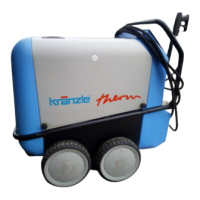
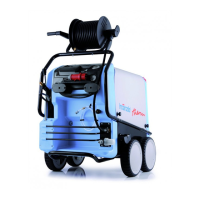
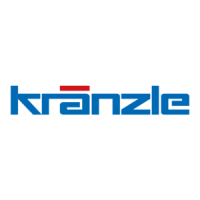
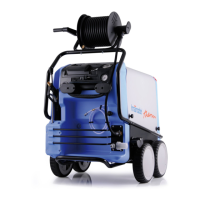

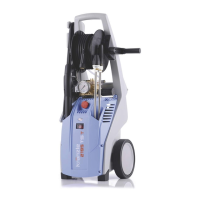

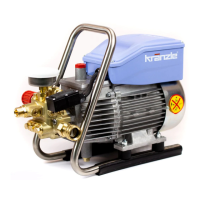
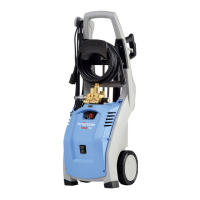
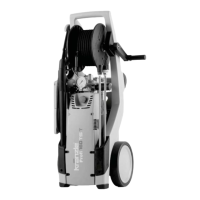
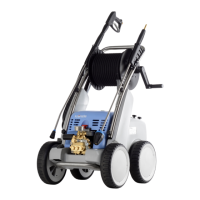
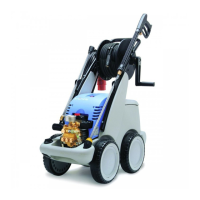
